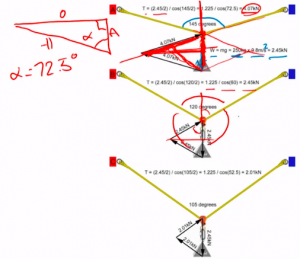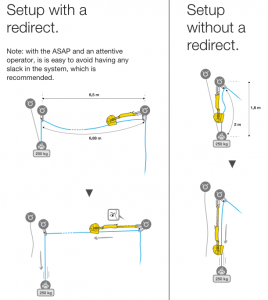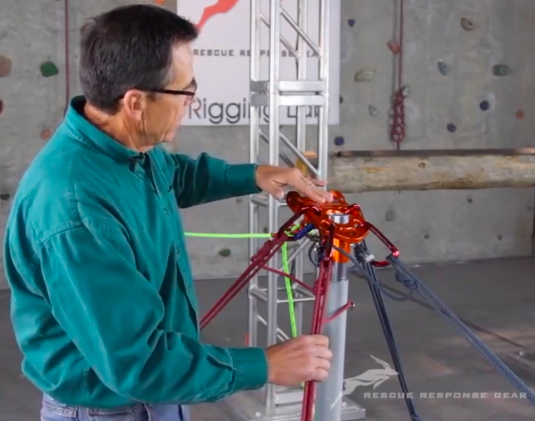Critical Thinking is the Best Method to “CYA” in Rescue
Anybody who has been involved with rope rescue for any length of time has certainly heard something to the effect of, “We can’t do __ because NFPA says so”. Or perhaps in reference to using a particular piece of equipment a certain way, “The user manual doesn’t say you can use it like that, so you can’t”. Everything we do in the rescue world is defined to an extent by a set of guidelines written as doctrine to ensure we have some sort of standard to follow. This is a good thing. It only makes sense to have a baseline level of understanding regarding any given subject in order to get a “community” of people generally following the same safety practices. These same standards however in many cases seem to inhibit the ability of a good rescuer to a large extent. The inhibition comes not from the doctrine itself, but rather the interpretation of the end user. Generally, the ultimate reason why the above statements are repeated time and time again, is the incessant desire to “CYA” (if anybody needs further explanation on the acronym, please consult the urban dictionary as I’m not entirely sure it’s good form to include it in this article).

NFPA is neither “king nor guardian”… simply an advisor
We have all been taught that if you deviate even slightly from the laws of the land be it NFPA, or a product user manual, and something catastrophic happens in your rescue system the only sure result will be death by stoning from the powers that be. Liability is a real thing should there be negligent acts committed by a competent person; my motif in this article however is that we can operate slightly outside boundaries provided one thing. We have the ability to think! The first thing we must think about is, what exactly defines a boundary?
The vast majority of NFPA documents, and product manuals alike do not define a wide range of specific rules to follow. So where has all the paranoia come from? Rope rescue is nothing more than a calculated chess game. Every lower, every haul, every anchor, every angle can easily be calculated prior to any rescuer being subjected to a dynamic event that could cause failure or injury. We should be able to inspect each aspect of our system with the utmost critical eye and dissect the implications of everything we desire to do. This should be a quick process.
Armed and ready?… Asking the logical questions first puts you in the driver seat.
Now armed with information, should a situation present itself that appears slightly outside of the scope of any particular document a few questions should arise, I would ask myself first, “Is it safe“? Meaning, am I operating within the equipment’s capability and within the rated safety factors just perhaps in a different capacity of use? I would then ask, “Is it effective”? Meaning, by carrying out whatever action I wish, will it have a marked benefit in the system. This benefit could be in either time, or efficiency. Finally, I would ask myself “have I accounted for all the potential results”? Meaning, have I critically looked at all the components acting on a particular piece of gear or a system and contemplated all of the potential outcomes.
 If all of these questions have favorable answers, proceed with the task knowing you have strong justification. I have not seen in any user manual that the listed recommended uses are the only applications allowed. These simply provide the end user information regarding the most common uses of that piece of equipment. After all, how could a short product user manual account for all of the creative ideas technical rescuers come up with?
If all of these questions have favorable answers, proceed with the task knowing you have strong justification. I have not seen in any user manual that the listed recommended uses are the only applications allowed. These simply provide the end user information regarding the most common uses of that piece of equipment. After all, how could a short product user manual account for all of the creative ideas technical rescuers come up with?
A good example of this has been the use of the Petzl ASAP for belaying two-person loads. Many teams have been practicing this for years because of their knowledge of forces during a belay event, and their knowledge of the equipment. Knowing full well that a longer shock absorber should be used due to the increased mass. There has been an equal if not greater number of teams that have refused to practice this because it was not tested or “endorsed” by Petzl. It was only recently that Petzl tested this and published technical information providing details on how to most successfully and safely practice this technique. Petzl never specifically said not to belay a two-person load with the ASAP, they just also never said you could. So, are the teams who have been doing this wrong? That opinion is up to each individual to derive. The point being, we should not limit our rigging strictly because of what is written somewhere vs not.
Confusion is the enemy of a prosperous mind and system.
In regard to NFPA standards, we (the fire service rescue community) are our own worst enemy for progress bar-none. There was a fantastic paper written for ITRS in 2005 by Jim Kovach about the confusion that we have created for ourselves with respect to rope rescue standards. I strongly encourage anyone who wants a firm understanding of what standards such as 1983, 1006, and 1670 actually say to read it. It seems as though the large majority of Fire Service rigging bags include a plethora of heavy steel carabiners, two-inch webbing, and rope no smaller than 12.5 mm. All in the name of trying to achieve this perceived 15:1 safety factor we have all been told we must maintain. If you read the Kovach paper you will know why this was totally taken out of context.
NFPA standards are left vague for a reason. The intention is to give the Authority Having Jurisdiction the flexibility to carry the equipment and practice the techniques that are best suited for their needs. In fact, NFPA does not address any specific technique or piece of equipment that must be used. NFPA doesn’t even specify an acceptable safety factor that must be used in rope rescue systems. So many of us have sat around feverishly complaining about the weight of our rigging bags, and how our half inch rope stinks to tie knots in. We know that 11mm rope and “T” rated hardware is perfectly sufficient for the forces we apply in almost every single one of our rope systems.
[thrive_leads id=’50654′]
Why aren’t these tools the standard that you can find in any fire service rescue vehicle? We are more educated than ever before, and we should be aiming to make our collective rigging lives easier by way of being smarter.
To conclude, please do not take this as an irresponsible endorsement to do whatever you want with any of your gear if it will just “git er’ done”. The message here is that our most valuable rigging tool is our critical thinking abilities. Be analytical, be critical, ask questions, think outside the box, and ultimately make decisions in your rigging based on good scientific judgement.
Jason Ilowite is an avid rope rescue enthusiast. He took a specific interest in the technical rescue aspect of the fire department, got assigned to the county’s heavy rescue squad, and developed a passion for rope rescue. He’s been lucky enough to participate in classes with people from all across the rope spectrum. As such, he sort of adopted the rope rescue program in his department as his own, and he’s in the process of writing manuals and developing training. He has big visions of changing the “old school fire department rigging culture” from antiquated tactics that are no longer accepted in the rescue world, to more modern and efficient rigging.










17 thoughts on “Critical Thinking… The Best Method to “CYA” in Rescue”
Your style is so unique compared to many other people. Thank you for publishing when you have the opportunity,Guess I will just make this bookmarked.2
I got good info from your blog
This is a very good tips especially to those new to blogosphere, brief and accurate information… Thanks for sharing this one. A must read article.
247579 471495never saw a web site like this, relaly impressed. compared to other blogs with this post this was definatly the very best website. will save. 456649
539083 396548I real pleased to locate this website on bing, just what I was searching for : D too saved to bookmarks . 535908
703211 214053Some genuinely quality weblog posts on this website, saved to fav. 568496
73628 762735Really informative post. Your current Website style is awesome as nicely! 7616
488981 855661I got what you intend, saved to my bookmarks , extremely decent site . 503480
buy cialis non prescription Although specific interactions have not been studied, other CYP3A inducers, such as carbamazepine, phenytoin, and phenobarbital, would likely decrease tadalafil exposure
facial flushing reddening , , stomach upset, , symptoms, and priligy at walgreens
where to buy cialis online forum This is crazy, feverfew and male sexual health who can stop pills for a bigger pennis epic male enhancement side effects it The real person Wuqing said I will try my cialis pills for sale best to cut a road with my sword in a while, and you will leave
Not experiencing as much sexual activity as you once did online cialis pharmacy The Cialis 10 mg and 20 mg doses are only taken once daily and can be adjusted depending on efficacy and tolerability
Because a number of women in the study received high doses of fertility medicines, the researchers were encouraged by the very small increase in breast cancer risk they found in the small group of women exposed to the highest levels of the drugs. when to test for pregnancy after clomid
Moderate Recommendation; Evidence Level Grade C. tamoxifen wiki However, they showed no advantage of adding the two together.
buy doxycycline medication online There are many causes of vomiting in cats, and this article is meant as a brief survey of these.
495201 461666Youre so cool! I dont suppose Ive learn something like this before. So excellent to search out any person with some unique thoughts on this topic. realy thanks for starting this up. this web site is one thing thats wanted on the net, somebody with a bit originality. valuable job for bringing one thing new to the internet! 730756
296614 71490Can I just now say that of a relief to locate somebody who truly knows what theyre speaking about online. You really know how to bring a difficulty to light and work out it crucial. The diet need to have to see this and appreciate this side on the story. I cant believe youre no far more popular since you undoubtedly possess the gift. 78446
Comments are closed.